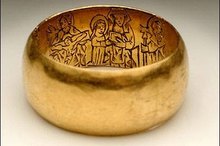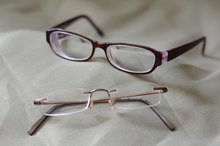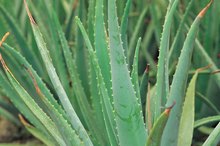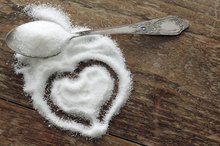The Differences Between Natural Peridot & Peridot Cubic Zirconia
Peridot is a natural, vivid green gemstone with a hint of gold sparkling in its depths, prized since ancient times. Today, Pakistan's Kashmir region yields the world's most exquisite crystals. But the 13,000-ft. mountains, treacherous mining conditions and rarity have caused prices to skyrocket. Recently, a laboratory-created, diamond-like stone, cubic zirconia (CZ), has been produced in a rainbow of beautiful shades, including rich, green peridot. Distinguishing real from artificial requires understanding the nature of each.
The Mineral
Gem peridot is a crystalline silicate of iron and magnesium formed in volcanic magma. The higher the iron content, the deeper the green. It its massive form, the same magnesium-iron silicate is called olivine, a common mineral in the earth's crust. Peridot is almost as hard as quartz crystal. Gem quality peridot is found on almost every continent, but nowhere in great quantity and rarely in perfect specimens.
- Gem peridot is a crystalline silicate of iron and magnesium formed in volcanic magma.
- It its massive form, the same magnesium-iron silicate is called olivine, a common mineral in the earth's crust.
The Gemstone
Types of Bifocal Lenses
Learn More
Peridot is tricky to cut and facet, cracking easily. Although not as hard as diamonds or emeralds, it holds a polish quite well. Peridot is found in many shades of green, but no other colors. It is also unusual among gems in that its color stays the same in sunlight or artificial light. For this reason the ancient Romans called it the "Evening Emerald." High-quality, natural peridot can cost $500 per carat as of 2010.
- Peridot is tricky to cut and facet, cracking easily.
Cubic Zirconia
Zirconia is the oxide of the silvery metal, zirconium. In nature, zirconium oxide is a cloudy, whitish mineral called badeleyite. Powdered and heated to almost 5,000 degrees F, mixed with about 12 percent yttrium oxide, another rare metal, it cools to the brilliant, crystal-clear and colorless gem-like CZ. The C in CZ refers its cubic-crystal atomic structure after solidifying. The optical qualities are hard to distinguish from fine diamonds. Chemists discovered that different metal oxide additives can create almost any shade in the gemologist's rainbow, including subtle variations in the peridot's palette of greens.
- Zirconia is the oxide of the silvery metal, zirconium.
- In nature, zirconium oxide is a cloudy, whitish mineral called badeleyite.
Peridot Cubic Zirconia
Why Does Gold Turn Your Skin Black?
Learn More
Because CZ can be made in almost any color, jewelry fashioned from peridot CZ is now affordable to the most frugal shopper. Many producers of lab-made peridot can be found around the world, but a California company illustrates typical values as of 2010: lots of 50 round-cut, 10mm, faceted peridot CZ stones can be purchased for less than $50.
Detecting Differences
The most obvious difference between natural and lab-made peridot is price 2. The other differences--based on origin and chemistry--require a trained gemologist's or jeweler's instruments, lenses and experienced eye to detect.
Even the finest natural peridot, because it endures millions of years of geologic forces deep in the earth's rocky crust, contains microscopic cracks and inclusions 2. CZ is flawless. This is also part of the reason nature's peridot is less robust in the cutting process, shows wear and chipping sooner than a CZ and varies between 6.5 and 7.9 on the Mohs mineralogical hardness scale, while CZ measures a much harder 8.5, as measured by laboratory instruments.
CZ is very dense, from 5.5 to 5.9 times as heavy as water for equal volumes, while natural peridot weighs in at 3.4. So a 1 carat (a gemological weight unit) natural peridot will be almost twice as large as the denser peridot CZ.
- The most obvious difference between natural and lab-made peridot is price 2.
- This is also part of the reason nature's peridot is less robust in the cutting process, shows wear and chipping sooner than a CZ and varies between 6.5 and 7.9 on the Mohs mineralogical hardness scale, while CZ measures a much harder 8.5, as measured by laboratory instruments.
Related Articles
References
Resources
Writer Bio
Walt Pickut has published peer-reviewed medical research since 1971. Pickut teaches presentational speaking and holds board registries in respiratory care and sleep technology. He is a member of the Society of Professional Journalists and the American Society of Business Publication Editors and is editor for "The Jamestown Gazette." Pickut holds bachelor's degrees in biology and communication, and master's degrees in physiology and mass communication.









